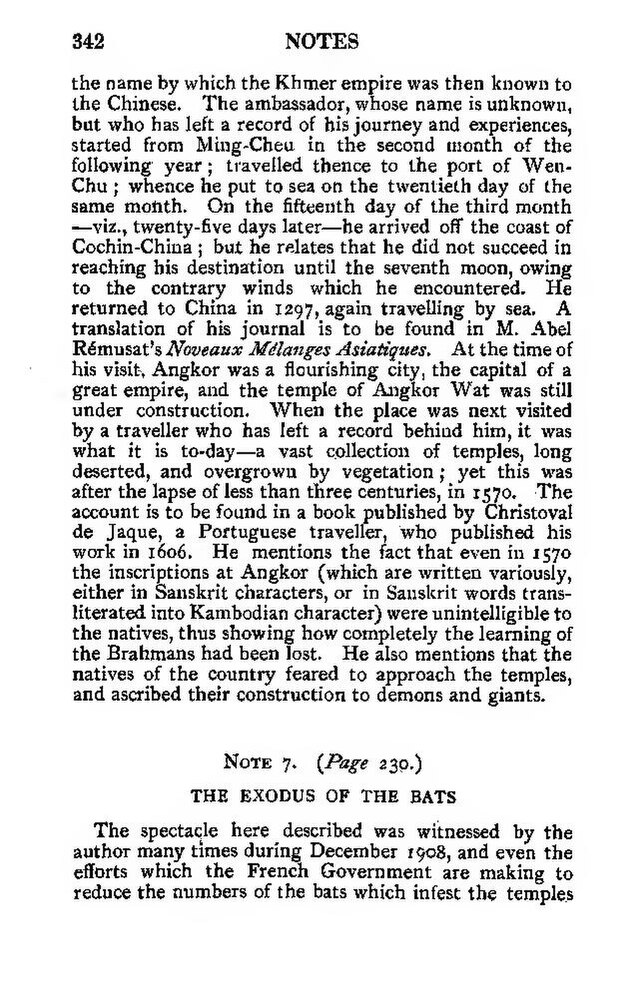the name by which the Khmer empire was then known to the Chinese. The ambassador, whose name is unknown, but who has left a record of his journey and experiences, started from Ming-Cheu in the second month of the following year; travelled thence to the port of Wen- Chu; whence he put to sea on the twentieth day of the same month. On the fifteenth day of the third month —viz., twenty-five days later—he arrived off the coast of Cochin-China; but he relates that he did not succeed in reaching his destination until the seventh moon, owing to the contrary winds which he encountered. He returned to China in 1297, again travelling by sea. A translation of his journal is to be found in M. Abel Rémusat's Noveaux Mélanges Asiatiques. At the time of his visit, Angkor was a flourishing city, the capital of a great empire, and the temple of Angkor Wat was still under construction. When the place was next visited by a traveller who has left a record behind him, it was what it is to-day—a vast collection of temples, long deserted, and overgrown by vegetation; yet this was after the lapse of less than three centuries, in 1570. The account is to be found in a book published by Christoval de Jaque, a Portuguese traveller, who published his work in 1606. He mentions the fact that even in 1570 the inscriptions at Angkor (which are written variously, either in Sanskrit characters, or in Sanskrit words trans- literated into Kambodian character) were unintelligible to the natives, thus showing how completely the learning of the Brahmans had been lost. He also mentions that the natives of the country feared to approach the temples, and ascribed their construction to demons and giants.
Note 7. (Page 230.)
THE EXODUS OF THE BATS
The spectacle here described was witnessed by the author many times during December 1908, and even the efforts which the French Government are making to reduce the numbers of the bats which infest the temples
